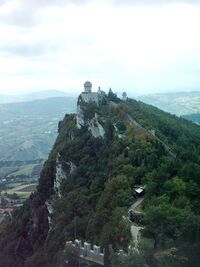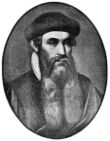1468
| القرون: | قرن 14 · قرن 15 · قرن 16 |
| العقود: | ع1430 ع1440 ع1450 ع1460 ع1470 ع1480 ع1490 |
| السنوات: | 1465 1466 1467 1468 1469 1470 1471 |
| ألفية: | الألفية 2 |
|---|---|
| قرون: | القرن 14 – القرن 15 – القرن 16 |
| عقود: | عقد 1430 عقد 1440 عقد 1450 – عقد 1460 – عقد 1470 عقد 1480 عقد 1490 |
| سنين: | 1465 1466 1467 – 1468 – 1469 1470 1471 |
| 1468 حسب الموضوع |
|---|
| الفنون والعلوم |
| العمارة - الفن |
| السياسة |
| زعماء الدول - الدول ذات السيادة |
| تصنيفات المواليد والوفيات |
| المواليد - الوفيات |
| تصنيفات التأسيسات والانحلالات |
| التأسيسات - الانحلالات |
| الفن والأدب |
| 1468 في الشعر |
| التقويم الگريگوري | 1468 MCDLXVIII |
| آب أوربه كونديتا | 2221 |
| التقويم الأرمني | 917 ԹՎ ՋԺԷ |
| التقويم الآشوري | 6218 |
| التقويم البهائي | −376 – −375 |
| التقويم البنغالي | 875 |
| التقويم الأمازيغي | 2418 |
| سنة العهد الإنگليزي | 7 Edw. 4 – 8 Edw. 4 |
| التقويم البوذي | 2012 |
| التقويم البورمي | 830 |
| التقويم البيزنطي | 6976–6977 |
| التقويم الصيني | 丁亥年 (النار الخنزير) 4164 أو 4104 — إلى — 戊子年 (التراب الفأر) 4165 أو 4105 |
| التقويم القبطي | 1184–1185 |
| التقويم الديسكوردي | 2634 |
| التقويم الإثيوپي | 1460–1461 |
| التقويم العبري | 5228–5229 |
| التقاويم الهندوسية | |
| - ڤيكرام سامڤات | 1524–1525 |
| - شاكا سامڤات | 1390–1391 |
| - كالي يوگا | 4569–4570 |
| تقويم الهولوسين | 11468 |
| تقويم الإگبو | 468–469 |
| التقويم الإيراني | 846–847 |
| التقويم الهجري | 872–873 |
| التقويم الياباني | Ōnin 2 (応仁2年) |
| تقويم جوچى | N/A |
| التقويم اليوليوسي | 1468 MCDLXVIII |
| التقويم الكوري | 3801 |
| تقويم مينگوو | 444 قبل جمهورية الصين 民前444年 |
| التقويم الشمسي التايلندي | 2011 |
Year 1468 (MCDLXVIII) was a leap year starting on Friday (link will display the full calendar) of the Julian calendar.
أحداث
يناير-ديسمبر
- 17 يناير - the death of Skanderbeg ( 1405 -1468) after twenty years of heroic resistance to the Ottomans opened to Mehmet II the doors of Albania .
- 29 يناير - ملك صنغاي، Sonni Ali Ber drives out the Tuareg from Timbuktu . He seized the city with the complicity of his governor and had most of the inhabitants massacred. After having established himself well in the city, Sonni Ali begins the conquest of Macina and Upper Niger 1 .
- 31 يناير - بداية حكم السلطان المملوكي بمصر قايتباي، إثر انقلاب (انتهى في 1496). في شمال الشام، أخمد تمرد الأمير التركماني ذو القادري شاه سوار، الذي كان مدعوماً من العثمانيين، في ثلاث حملات صعبة (1468-1472).
- الربيع - الوزير العثماني Mahmud Pasha Angelović يحتل Karamania. Part of the population of Larende and Konya is deported to repopulate Istanbul
- June 30 – Catherine Cornaro is married by proxy to James II of Cyprus, beginning the Venetian conquest of Cyprus.
- 10 يوليو - ملك قبرص يوحنا الثاني لوزينيان يتزوج بتفويض كاثرين كورنر، من البندقية. جمهورية البندقية حددت في عقد الزواج أن الملك لو مات بدون وريث، فإن قبرص ستصبح من أملاك البندقية.
- يوليو - The Ottoman vizier Mahmud Pasha Angelović is disgraced on his return from Karamania by Sultan Mehmet II following the intrigues of Roum Mehmed Pasha, the second vizier, then recalled in 1472.
- August 26 – Baeda Maryam succeeds his father Zara Yaqob, as Emperor of Ethiopia.
- October 14 – The Treaty of Péronne is signed by Charles the Bold, Duke of Burgundy, and Louis XI of France.[1]
مجهولة التاريخ
- Capture and destruction of Anafé or Anfa in Morocco (now Casablanca ) by an expeditionary force of 50 ships and 10,000 men sent by King Alfonso V of Portugal.
- After the death of Abulkhair Khan, the Uzbek Khanate fell apart into appanages.
- After small skirmishes with the detachments of the Tavlins, led by their leader, a protege of the disintegrating empire of the Timurids, the Chechen detachments drove the remnants of the migrant Asian tribes from their territories, with the hordes of Timur the Lame, across the Kuma River, and again began to restore their settlements on the plains and foothills of the Caucasus , from the middle of the 15th to the beginning of the 16th centuries. this is how the village of Dzhugurty (Chechen Republic) was re-founded.
- The Lancastrians surrender Harlech Castle to King Edward IV of England after a seven-year siege.
- The Great Council of the Republic of Venice attempts to curb the power of the Council of Ten through legislation restricting them to acting on emergency matters.
- أوركني is pledged by Christian I, in his capacity as King of Norway, as security against the payment of the dowry of his daughter Margaret, betrothed to James III of Scotland. As the money is never paid, the connection with the crown of Scotland becomes perpetual.
- نشوب حريق في كاتدرائية متز بفرنسا.
مواليد
- February 29 – Pope Paul III (ت. 1549)[2]
- March 28 – Charles I, Duke of Savoy (ت. 1490)
- April 27 – Frederick Jagiellon, Primate of Poland (ت. 1503)
- May 31 – Philip, Prince of Anhalt-Köthen, German prince (ت. 1500)
- June 30 – John, Elector of Saxony (1525–1532) (ت. 1532)[3]
- July 24 – Catherine of Saxony, Archduchess of Austria (ت. 1524)
- August 3 – Albert I, Duke of Münsterberg-Oels, Count of Kladsko (ت. 1511)
- August 26 – Bernardo de' Rossi, Italian bishop (ت. 1527)
- December 21 – William Conyers, 1st Baron Conyers, English baron (ت. 1524)
- مجهولة التاريخ
- Marino Ascanio Caracciolo, Italian cardinal (ت. 1538)
- Mir Chakar Khan Rind, Baloch chieftain (ت. 1565)
- Juan de Zumárraga, Spanish Franciscan prelate and first bishop of Mexico (ت. 1548)
- probable – Alonso de Ojeda, Spanish conquistador and explorer (ت. 1515)
وفيات
- February 3 – Johannes Gutenberg, inventor of printing press with replaceable letters (و. c.1398)[4]
- March 12 – Astorre II Manfredi, Italian noble (و. 1412)
- June 10 – Idris Imad al-Din, supreme leader of Tayyibi Isma'ilism, scholar and historian (و. 1392)[5]
- June 14 – Margaret Beauchamp, countess of Shrewsbury
- June 30 – Lady Eleanor Talbot, English noblewoman
- July 5 – Alfonso, Prince of Asturias (و. 1453)
- September 26 – Juan de Torquemada, Spanish Catholic cardinal (و. 1388)[6]
- October 7 – Sigismondo Pandolfo Malatesta, lord of Rimini (و. 1417)
- October 28 – Bianca Maria Visconti, Duchess of Milan (و. 1425)
- November 24 – Jean de Dunois, French soldier (و. 1402)
- December 6 – Zanobi Strozzi, Italian painter (و. 1412)
- مجهولة التاريخ
- Joanot Martorell, Spanish writer (و. 1419)[7]
- Francesco Squarcione, Italian artist b(1377)
- Zara Yaqob, Emperor of Ethiopia (و. 1399)
- Pomellina Fregoso, Monegaque regent (و. 1388)
الهامش
- ^ Philippe de Commynes (1892). The Memoirs of Philip de Commines, Lord of Argenton: Containing the Histories of Louis XI, and Charles VIII. Kings of France and of Charles the Bold, Duke of Burgundy. G. Bell and Sons. p. 130.
- ^ "Paul III | pope". Encyclopedia Britannica (in الإنجليزية). Retrieved 22 April 2019.
- ^ "John | elector of Saxony". Encyclopedia Britannica (in الإنجليزية). Retrieved 20 October 2020.
- ^ Philip B. Meggs (9 September 1998). A History of Graphic Design. Wiley. p. 69. ISBN 978-0-471-29198-5.
- ^ Qutbuddin, Tahera (2018). "Idrīs ʿImād al-Dīn". In Fleet, Kate; Krämer, Gudrun; Matringe, Denis; Nawas, John; Rowson, Everett (eds.). Encyclopaedia of Islam, THREE. Brill Online. doi:10.1163/1573-3912_ei3_COM_32368. ISSN 1873-9830.
- ^ Kenneth Meyer Setton (1976). The Papacy and the Levant, 1204-1571. American Philosophical Society. p. 282. ISBN 978-0-87169-127-9.
- ^ Mediaevalia. Center for Medieval and Early Renaissance Studies, State University of New York at Binghamton. 2000. p. 68.
This article contains content from Wikimedia licensed under CC BY-SA 4.0. Please comply with the license terms.

